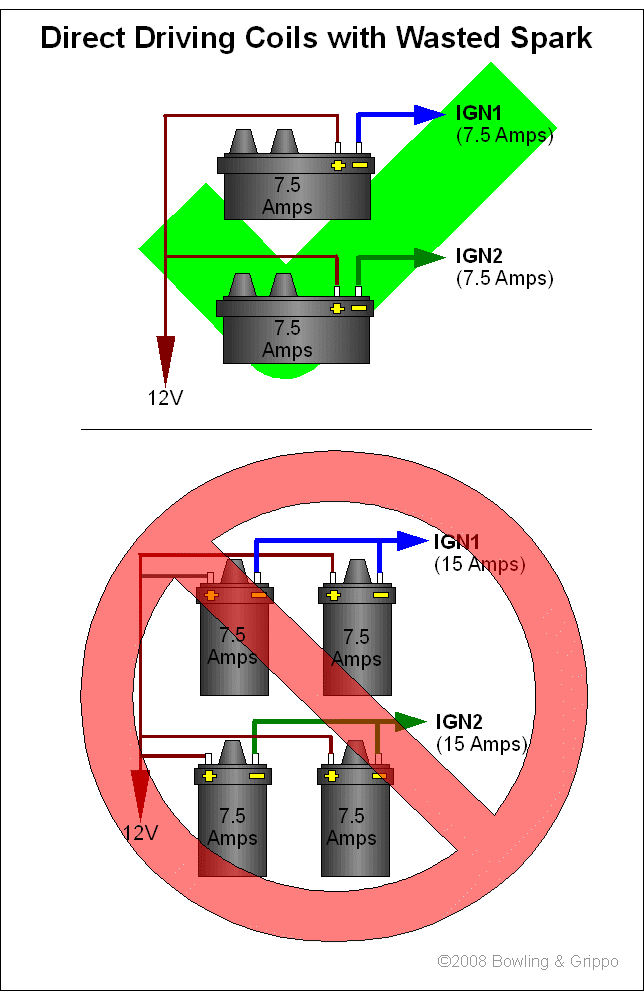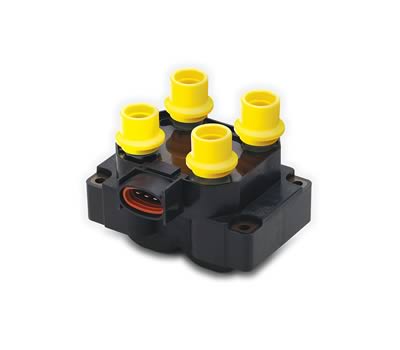
Click here for MegaSquirt® MegaManual™ Information, Guides, and Links

A couple of things to note for those installs that are direct-driving ignition coils with MicroSquirt® (i.e. not using an ignition driver module but instead using the VB921 drivers in the MicroSquirt):
By the way, for those just curious on why this particular nomenclature, the answer is that the driver IGBT in the MicroSquirt® controller inverts the signal in its configuration. The processor output on the MicroSquirt® (you do not have access to this wire, it is hard-wired to the IGBT) goes high in order to turn on the IGBT driver, which then pulls the output low (i.e. inverts).
The optimal dwell value is a function of the primary inductance and resistance. Chances are you do not know the inductance or resistance. If you do not then you can do one of two things:
www.megamanual.com/files/software/IgnCoilAnalyze.zip
Follow the instructions included with the application and you will quickly determine the ignition coil dwell time. One item to note is that the IGBT driver used in MicroSquirt® saturates at 7.5 amps, so use this number as the charge current in the application.
For more info, see the 'Setting Dwell' section of the manual.
Here is why the condenser (a.k.a. capacitor) reduced the sparking: A capacitor blocks direct current (DC) but will pass AC current. When the points open there is a fast transient in voltage and current. What the condenser would do is to briefly shunt the current around the points and complete the path. But it would only do this for a brief moment, but enough to reduce the arcing.
The same thing can be done with solid state ignition drivers - in fact systems like the Ford EDIS and GM HEI use capacitors located at the ignition coil. These capacitors will briefly shunt the flyback current, bypassing the driver, for a brief moment. What this does is reduce the stress on the driver AND reduce the radiated noise emission (EMI). It is a significant benefit. The capacitor does change the discharge pattern slightly (it sets up a L-R-C circuit) but not enough to notice.
You can easily do the same thing. On the IGN signal from the MicroSquirt® going to the ignition coil, connect a 0.01 microFarad (µF) capacitor rated at 630 volts or so, connect the other terminal to ground. Connect this up right at the ignition coil (EDIS does this) such that the shunt path is contained right at the ignition coil. You need to use a Polypropylene (PP) capacitor rated for pulse discharge operation. A good choice is the Wima MKP-10 series:
You can also use an equivalent, like Epcos B32621A6103J (you can get this at www.digi-key.com).
But you CANNOT 'direct drive' two or more separate coils in wasted spark configuration directly off of one VB921 ignition driver (see below).

If you want to drive more than 2 coils, you might look at the 4-coil Bosch 211 igniter or the LSx series of coils with their built in igniters (and logic level signals on the ignition outputs).
Note that coils for dedicated wasted spark usage often come in "coil packs". Typically, these are two coils with 4 high tensions leads (i.e., 4-cylinder) in a single package. MicroSquirt® controllers *can* control the 2 coils in one of these coil packs in wasted spark mode, since each coil can be controlled by separate ignition drivers (IGN1 or IGN2). An example is the Ford EDIS coil (see below) which can be directly driven on the coil pack's pins 1 and 3 (with 12V on pin 2):
